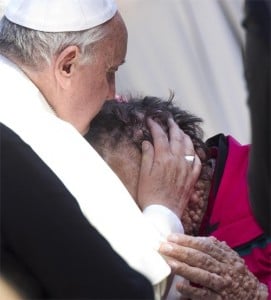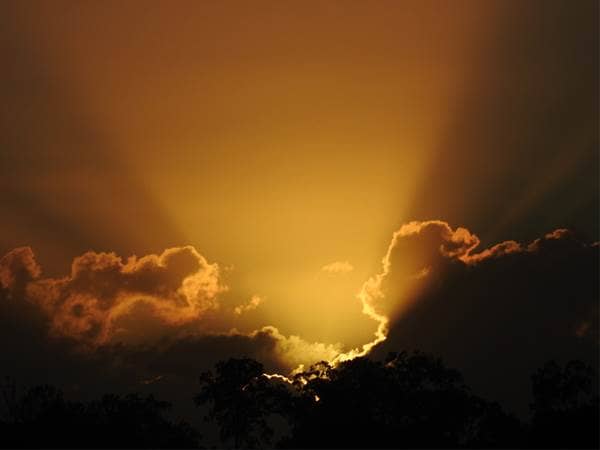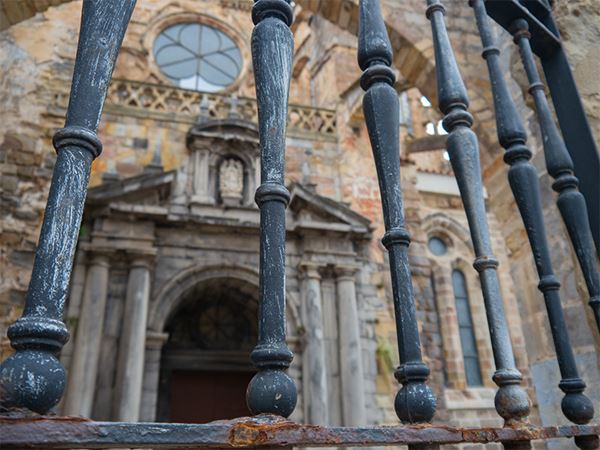
- Trending:
- Pope Francis
- |
- Resurrection
- |
- Trump
- |
- Social Justice
- |
- Peace
- |
- Love
The 100 Most Holy Places On Earth
Gergeti Trinity Church

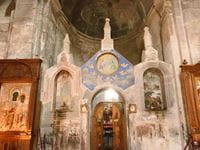
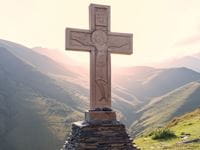
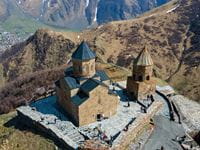
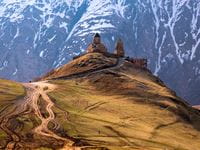
Associated Faiths:
Georgian Orthodox and Apostolic Church.
Also frequented by Christians of other High and Low-Church traditions.
Accessibility:
Open to visitors. Men must wear long pants and women must wear a dress or skirt. No shorts are allowed. Women are required to cover their hair. No pictures are allowed to be taken inside of the church.
Gergeti Trinity Church welcomes about 225,000 visitors a year.
History
Georgia’s Holy Trinity Church—more often referred to by its nickname, “Gergeti Trinity Church”—is a 14th century stone building which rests near the Russian-Georgian boarder, in the Khevi province. Rurally situated, the church sits at an elevation of nearly 2,200 feet, and just beneath Mount Kazbek. Built in at least two stages, all during the 1300s, the architect of the building remains unknown—in part because the design is not unique but, rather, quite reminiscent of the era.
As it is, the climb to the church takes between 60 and 100 minutes on foot. For many years, hiking to the church was the only way to access it. For that reason, in times past, certain relics were stored in the church, knowing that they would be more readily preserved simply by virtue of their inaccessibility. In 1988, Soviet authorities built a cable-car line to the church. However, parishioners found this offensive and defiling, and took it upon themselves to destroy the line. While a paved road up to the church was created in 2018, a 2021 landslide made it unusable. A separate unpaved road—suitable for driving only in a 4WD vehicle—still exists largely unobstructed. Nevertheless, the church remains remote and only inconveniently accessible.
While the building is not overly ornate, and has only minimal ornamentation on its exterior, many see the setting as the church’s greatest ornamentation, and the church as the landscape’s best embellishment as well. Much of the building’s fame derives not from events that have taken place at the church or relics contained within the edifice, but because of how the landscape enhances the church and the church enhances the landscape. It is as thought God’s natural creations were embellished by a human-created monument to that same God—thus, standing as a double attestation to the existence of the divine.
Under the former Soviet Union, worship services were not allowed in this 14th century house of worship. However, with Georgia’s break from the former USSR, the Divine Liturgy has been reestablished in the church and regular services are held there. The building and its congregation are part of the Georgian Orthodox Church, which falls under the Eastern Orthodox Tradition.
Religious Significance
Georgia’s Holy Trinity Church is like an icon of Georgian culture and history. Surrounded by mountains and resting atop a perch (some 2,200 feet in the air) the building jumps out at you as you scan the otherwise barren horizon. Its singularity makes it the sole focus.
The interior of the church makes the pilgrim, parishioner, and tourist all feel as though they have stepped back in time. With grayish stone interior walls and floors, and with faded iconographic murals panted on the 14th century rock walls, one instantly senses the sacred space one has entered. While, like the exterior of the building, the interior is hardly what you would call “ornate,” nevertheless, both are uniquely inspiring. Because Orthodox churches are typically very elaborate, visitors might be surprised by how this one is not. The iconostasis (or “icon screen”) is as plain as any, and so much of the interior feels almost ancient—to the degree of looking like it is in a state of disrepair. However, like walking the streets of old Jerusalem, the ancientness of the setting almost provokes the awe of it, inspiring a sense of holiness and sacrality.
There are really two primary things which make this a “sacred space” for various individuals, religious and non-religious alike. First, for the religious, it is a church—and a very old church at that. Thus, for those who seek to worship God in the traditional sense, Georgia’s Holy Trinity Church inspires a sense of awe that is much different than one might encounter in a more modern Orthodox church, or in modern churches generally. One feels close to God in this building because one senses that the church, its furnishings, and its entire ambiance seem to date back to an earlier era, a time closer to God, per se. For the non-religious, or the naturalist, Gergeti’s Trinity Church feels like “sacred space” because of its setting. So many in our busy, crowded, modern world feel like God is only accessible by somehow escaping the city. The Gergeti Trinity Church, with its rural location and its majestic surroundings, is the best of both worlds. It is a church, but it is nature—all synthesized into one. If nature is your religion and the wilderness your cathedral, you’ll find this Renaissance-era church right up your alley.
Finally, the Holy Trinity Church constitutes a “holy site” because of its almost lonely nature. It is a symbol—a symbol of Christ’s constant command that the faithful must “endure to the end.” Just as the building stands alone on the landscape of the Georgian-Russian boarder, the church is a reminder of an era when communism did all that it could to squelch religion and faith in God. The believer often stood alone during that challenging era, just as this church stands alone—and yet both survived. Both Christianity and the Gergeti church survived years of persecution. Both survived years of weathering. Both survived political and social shifts and threatening trends. Thus, this little rural and inaccessible 14th century church is holy, it is “sacred space,” because it reminds the pilgrim that the journey is often hard and long, but endurance is God’s command and, at the end of the climb, is God’s great reward.



